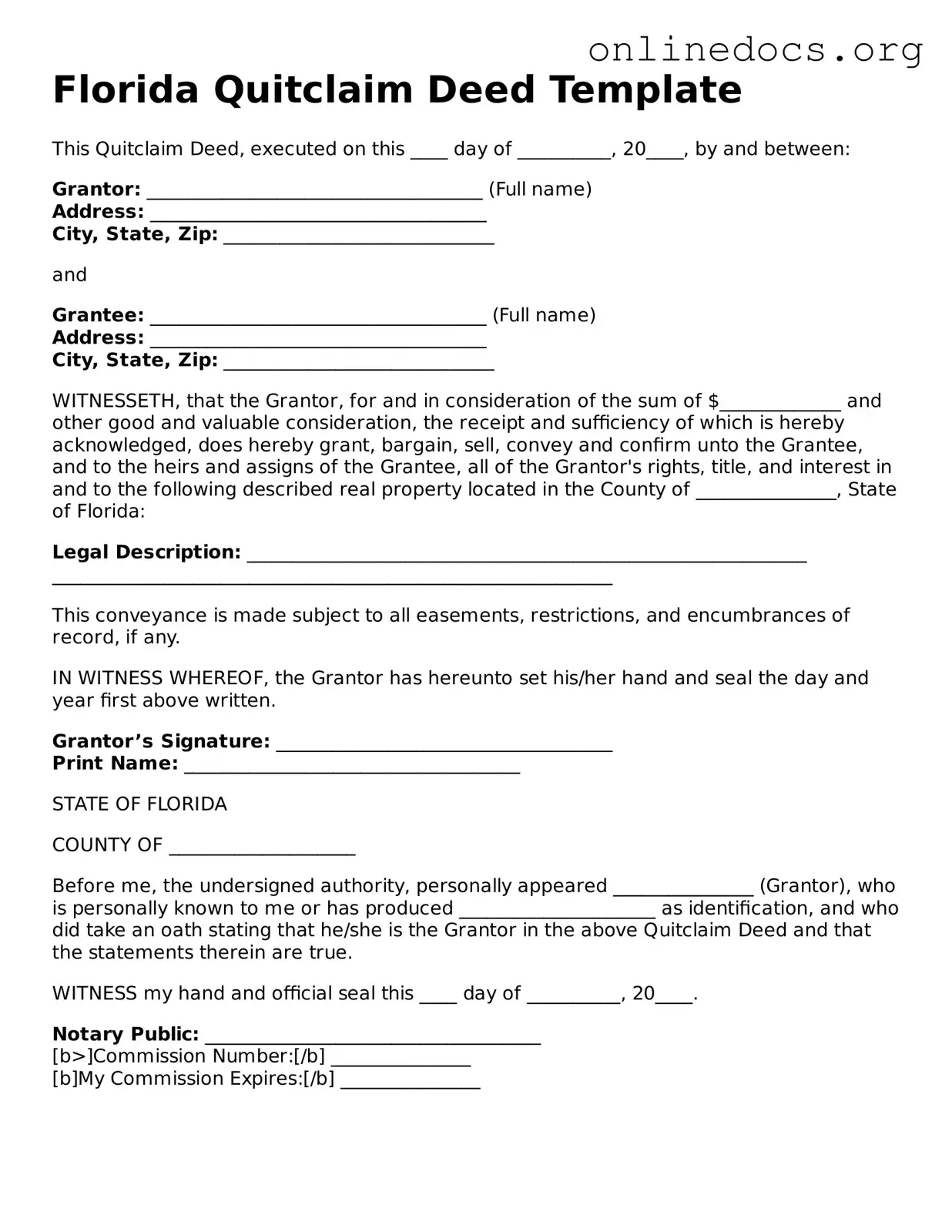A Warranty Deed is similar to a Quitclaim Deed in that both documents transfer ownership of real estate. However, a Warranty Deed provides a guarantee that the seller holds clear title to the property and has the right to sell it. This means that if any issues arise regarding ownership, the seller is responsible for resolving them. In contrast, a Quitclaim Deed does not offer any such guarantees, making it a riskier option for the buyer.
A Grant Deed also serves to transfer property ownership, but it includes certain assurances from the seller. Specifically, a Grant Deed guarantees that the property has not been sold to anyone else and that there are no undisclosed encumbrances. While it is more secure than a Quitclaim Deed, it still does not provide the full protection of a Warranty Deed.
A Bargain and Sale Deed is another document that transfers property. This type of deed implies that the seller has ownership and the right to sell, but it does not guarantee that the title is free of issues. Like a Quitclaim Deed, it offers limited protection for the buyer, focusing mainly on the transfer of ownership without additional assurances.
An Executor's Deed is used when property is transferred from a deceased person's estate. This document allows the executor to convey the property to heirs or beneficiaries. While it serves a similar purpose to a Quitclaim Deed in transferring ownership, it is specific to estate situations and may involve additional legal requirements.
A Trustee's Deed is used when property held in a trust is transferred to a beneficiary or another party. This deed signifies that the trustee has the authority to make the transfer. While it serves a similar function to a Quitclaim Deed, it is specific to trust situations and often involves more complex legal considerations.
A Deed of Trust is a security instrument used in real estate transactions. It involves three parties: the borrower, the lender, and a trustee. The borrower conveys the property to the trustee, who holds it as security for the loan. Unlike a Quitclaim Deed, which merely transfers ownership, a Deed of Trust is tied to a financial obligation.
A Leasehold Deed conveys an interest in a property for a specified period, typically under a lease agreement. While it does transfer certain rights, it does not transfer ownership of the property itself. This document is different from a Quitclaim Deed, which fully transfers ownership without time limitations.
If you are looking for proper documentation for health-related absences, a Doctors Excuse Note can be very helpful. This note verifies your medical condition and justifies your absence from work or school, which is often required by employers or educational institutions. You can easily access the form you need at fillpdf-forms.com/.
A Special Warranty Deed is similar to a Warranty Deed but limits the seller's liability to issues that arose during their ownership of the property. This type of deed offers more protection than a Quitclaim Deed but less than a full Warranty Deed, making it a middle ground option for buyers.
A Mineral Deed transfers ownership of mineral rights beneath a property. This document is specific to the rights associated with natural resources and does not affect the surface rights. While it serves a different purpose than a Quitclaim Deed, both documents involve the transfer of rights associated with real estate.
A Bill of Sale is not a deed but is often used in conjunction with property transactions. It transfers ownership of personal property rather than real estate. While a Quitclaim Deed focuses on real estate, a Bill of Sale is essential for transferring ownership of items like vehicles or equipment, highlighting the differences in the types of property involved.
